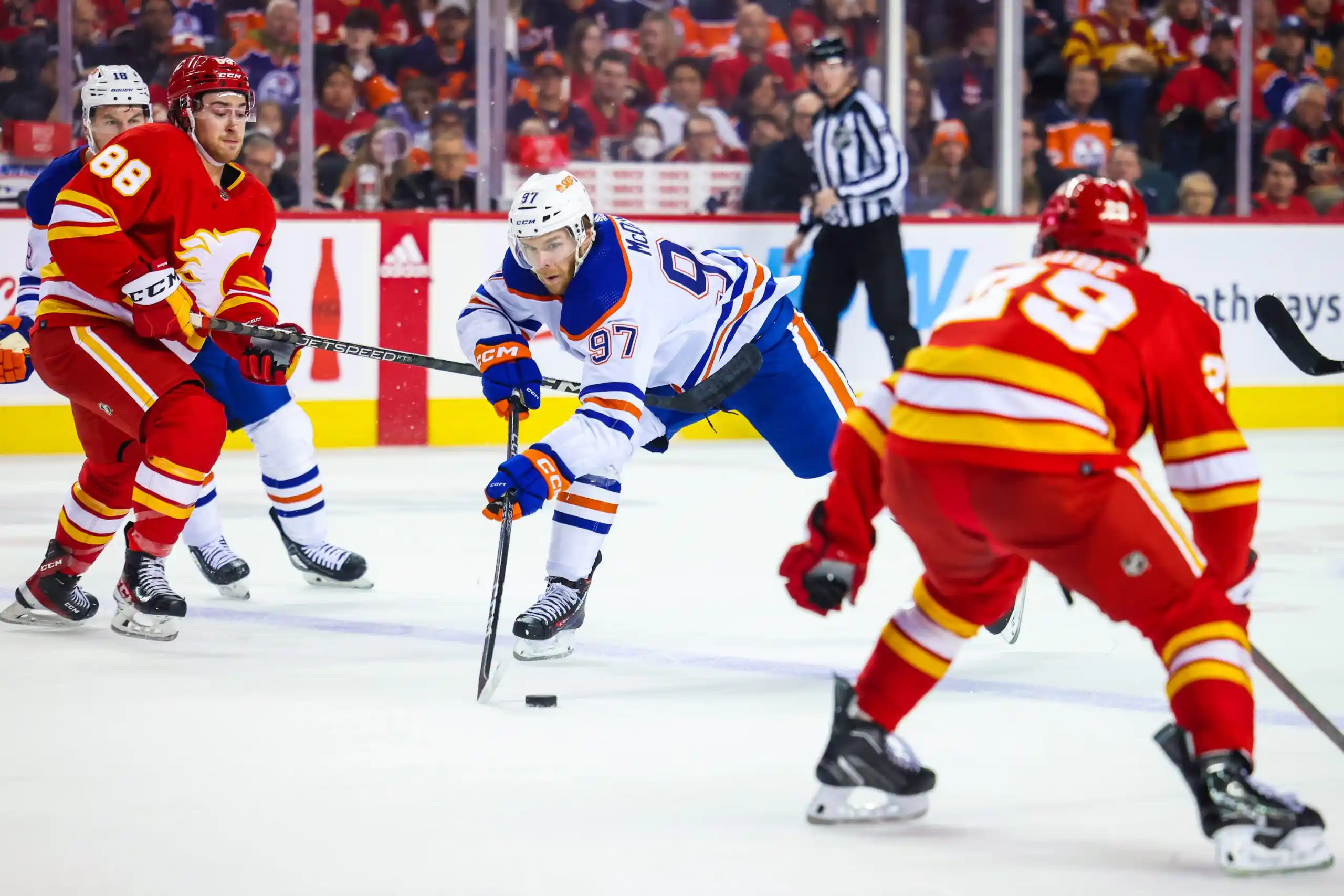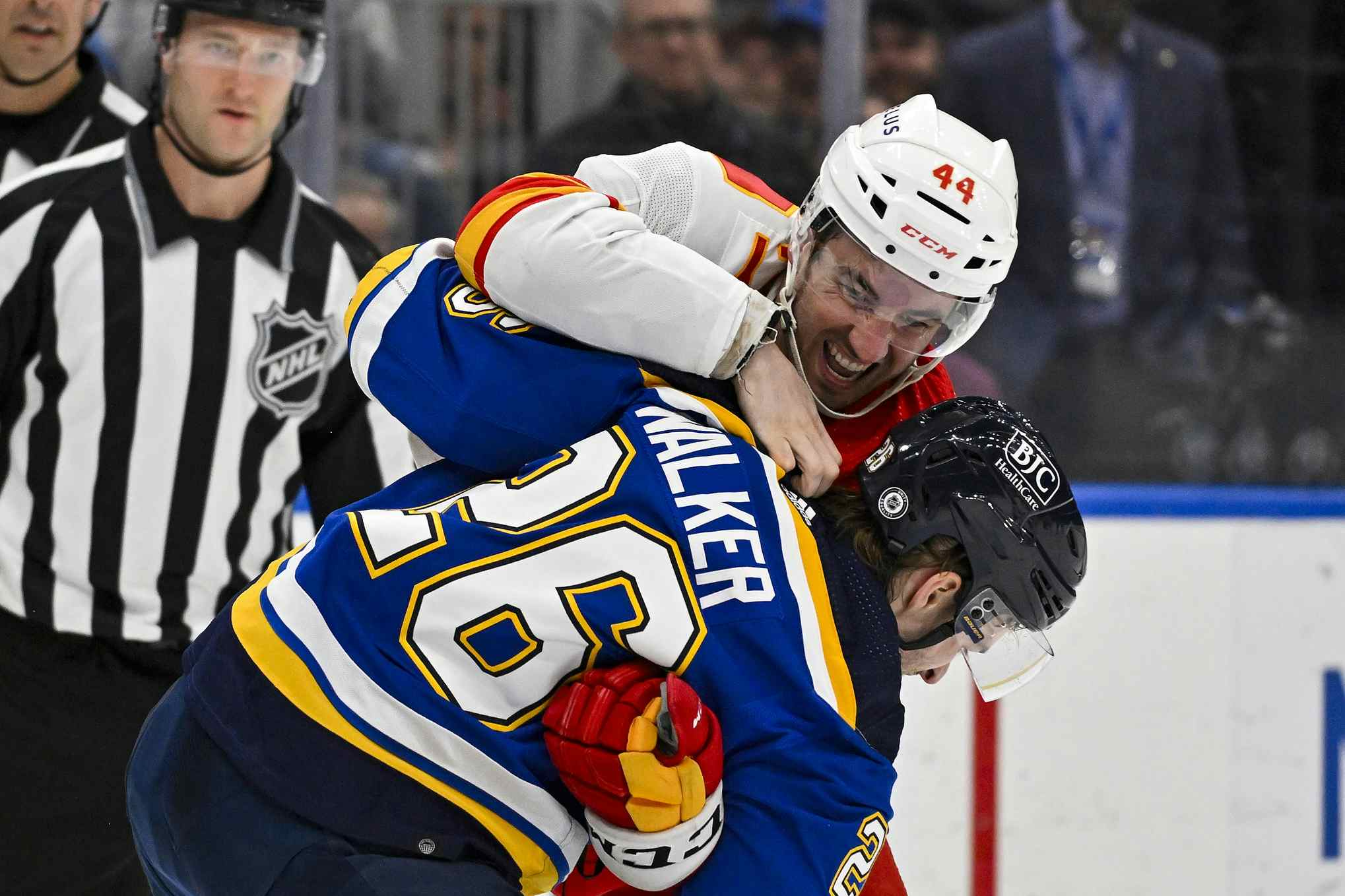Random Thoughts: Reading tea leaves
By Kent Wilson
7 years ago
The Flames’ rough January has fans brandishing pitchforks and leaping off the bandwagon in droves.
After going 4-9-0 and suffering humiliating losses to the Oilers, Leafs and Habs, it seems self-evident that Calgary’s season is circling the drain. But despite the bad record and gut-punch losses, January actually contained a solid kernel of hope and optimism.
Seems impossible, I know, but stay with me.
– As noted in my Tweet above, Not everything went badly in January. In fact, in some ways this month was the Flames’ best of the season, even though it didn’t show up in the W-L record. Whaaat? It’s true. Check out this chart:
| Corsi | Shots | Expected Goals | Goals | Percentages | |||||
|---|---|---|---|---|---|---|---|---|---|
| CF | 567 | SF | 316 | XGF | 26.01 | GF | 15 | SH% | 4.75% |
| CA | 458 | SA | 237 | XGA | 23.38 | GA | 23 | SV% | 90.30% |
| Cdiff | 109 | Sdiff | 79 | XGDiff | 2.63 | GFDiff | -8 | PDO | 95.04 |
| CF% | 55.32% | SF% | 57.14% | XG% | 52.66% | GF% | 39.47% |
Lots of stuff here, but it’s pretty simple. From left to right I have the Flames’ total shot attempts (corsi), shots on net, expected goals, actual goals and shooting/save percentage at even strength (5on5) for Janaury.
As you can see, there is one key outlier: despite owning the majority of shot attempts, shots and expected goals, the Flames managed less than 40% of the actual goals at 5on5. How is that possible?
Take a look at the last column. Calgary’s percentages over the last 13 games were putrid – particularly their shooting percentage of just 4.75%. To put that number in perspective, Deryk Engelland’s career SH% is 4.6. So it was like the Flames’ entire roster transformed into Engelland for a month. It’s remarkable they won any games at all.
– “Yeah but that low shooting percentage is reflective of the Flames’ inability to create scoring chances,” you might say. It may seem like the club spent the whole month just firing low percentage shots into the opposing goalie’s crest, but that’s more perception than reality.
That’s why I included both total shots and Corsica Hockey’s expected goals stat. That takes into account shot factors like distance to the net, shot angle, whether it was a rebound, off the rush, etc. According to that model, the Flames should have scored 26 even strength goals this month (for a completely average 8.22 SH%). Instead, they managed just 15.
– For long time readers, the Flames PDO of just 95.04 is instructive. We know from years of work that PDO tends to regress to the league average of 100 over time. In other words, no NHL team is so bad as to shoot less than 5% over time or manage a 95 PDO forever.
– For further context, Calgary’s even strength shooting percentage from October 2014 to now (Jan. 31, 2017) is 8.04%. That’s more indicative of their shooting ability than a single, isolated 13-game sample. We should expect them to move back up to that finishing rate.
– If you’re looking for a more lasting criticism of the club’s January, it’s on the defensive side of the puck: Calgary gave up 23 goals against at ES and their expected GA was actually 23.38. That means the Flames were surrendering some pretty high-quality chances against this past month.
Even when generating 79 more shots at ES than the bad guys, they only had three more expected goals for in aggregate. That’s much better than what actually happened and we should expect improvement as a matter of course, but the club also needs to tighten up.
Of course, a few more timely saves from the guys between the pipes would go a long way, too.
– “The Flames spent the whole month trailing which would inflate all of their shot metrics.” You’re correct! But not so much that it invalidates the conclusion they were roughed by lady luck. If we use Corsica Hockey’s venue and score adjustments, Calgary’s CF%, SF% and XGF% each drop to 53.12%, 55.1%, and 50.42%. Less impressive, but still pretty healthy.
– If none of this analysis seems satisfactory compared to explanations like a lack of leadership, heart or toughness, well…that’s because we are all pre-wired to jump to those kinds of conclusions. Certain narratives feel far more intuitive than “randomness”.
– The big bias here is one I’ve written about frequently in the past called the Fundamental Attribution Error (or correspondence bias). This is the tendency to overweight personal, internal factors when explaining other people’s results or behaviour. That means we also tend to underweight the influence of external factors. Of course, most people do the opposite when explaining their own behaviour. A related bias is the Just-world hypothesis. This heuristic means we assume that people are generally deserving of their outcomes.
– Put those things together and you have the natural inclination to make up stories that stress personal, internal failings that (deservingly) lead to bad outcomes. Bad record this month? That must mean the team doesn’t care, has a fractured dressing room, lacks internal fortitude or just isn’t tough enough, right?
– Of course, if that stuff was true, we would have also seen the Flames’ shot metrics take a dive down the toilet, rather than just their percentages. But because the bad results are mostly isolated to SH%, we can safely conclude natural variance is the primary suspect for Calgary’s terrible January.
– tl;dr – The Flames outshot the bad guys to a nontrivial degree in January and were undermined by an uncharacteristically low shooting percentage. If they continue to put way more pucks on net than their opponents, we can expect their SH% to regress back to the league average, meaning they should win a lot more often moving forward.
Recent articles from Kent Wilson





